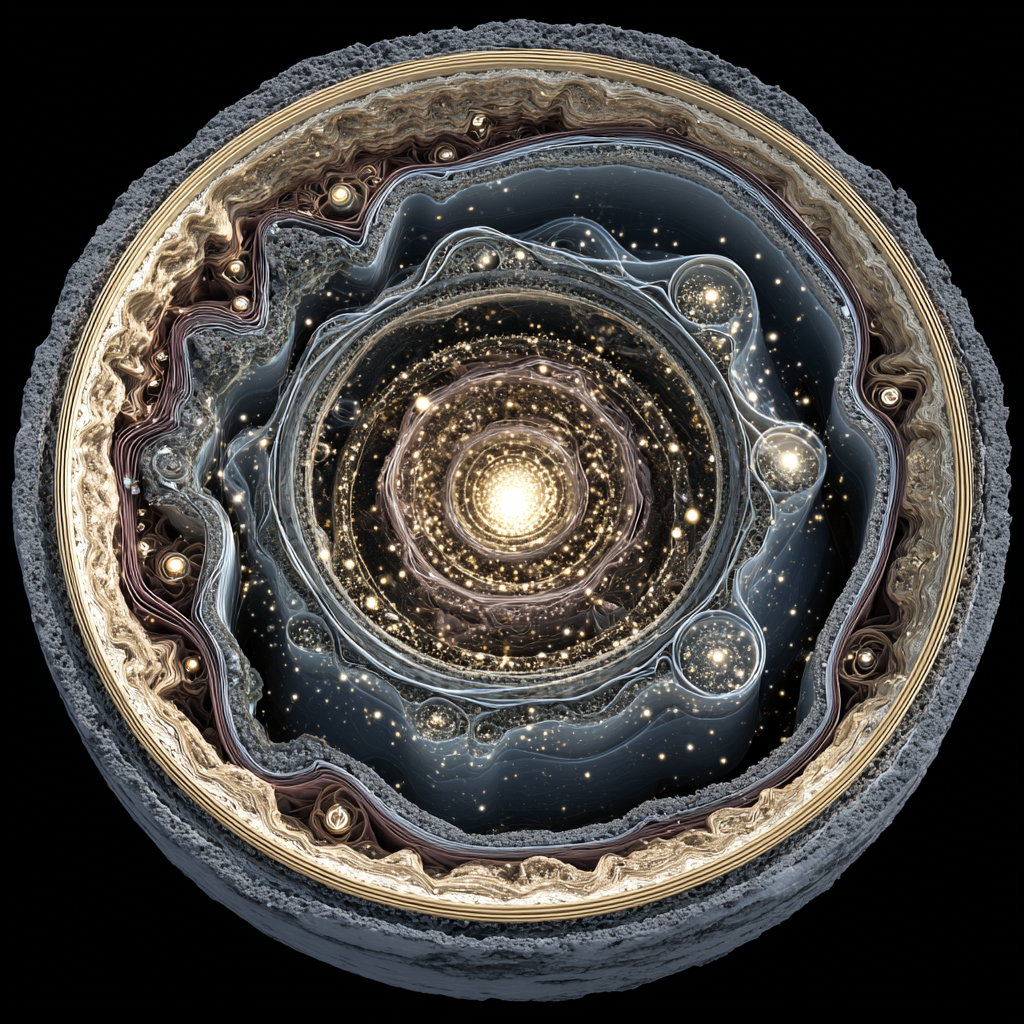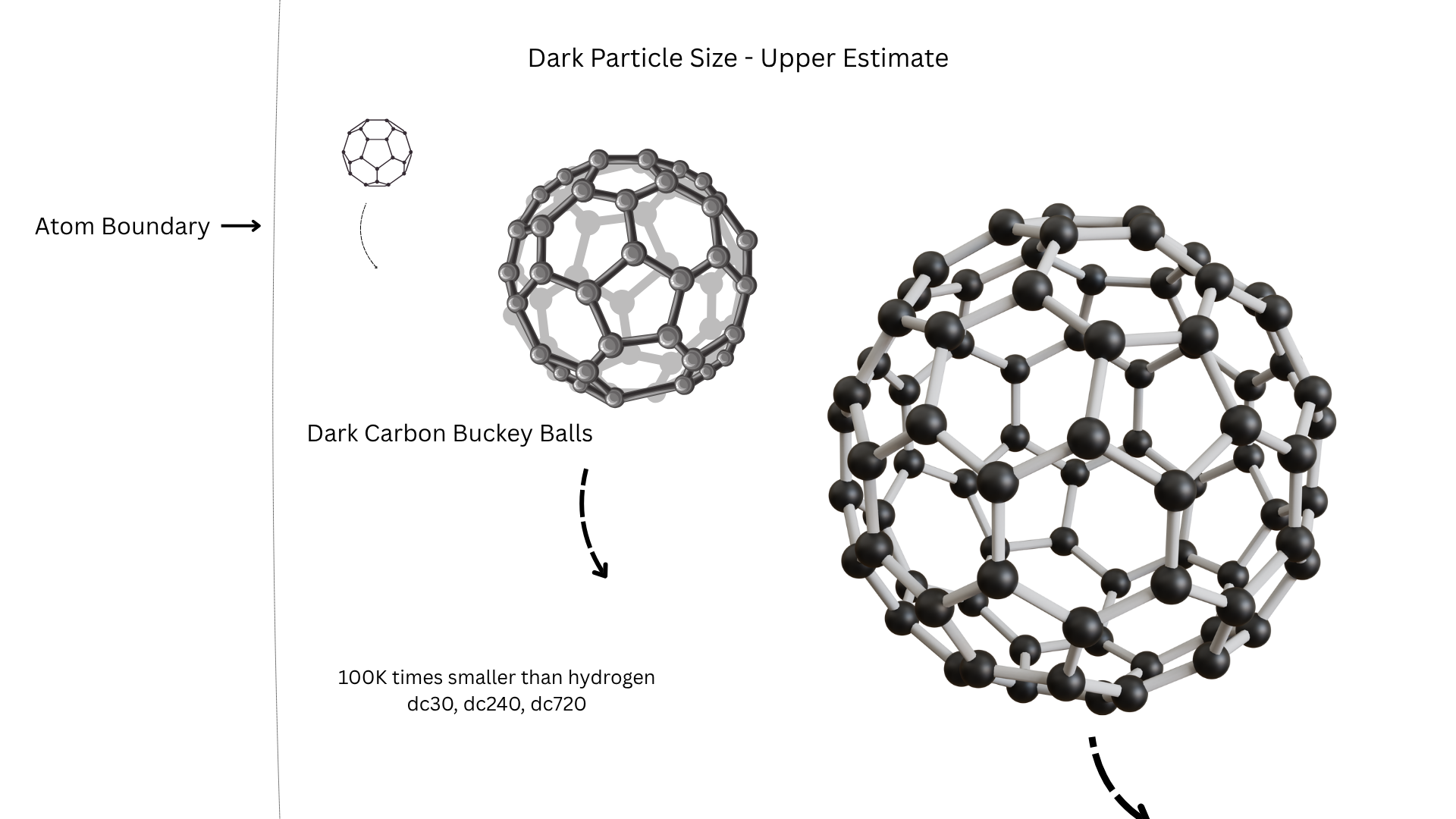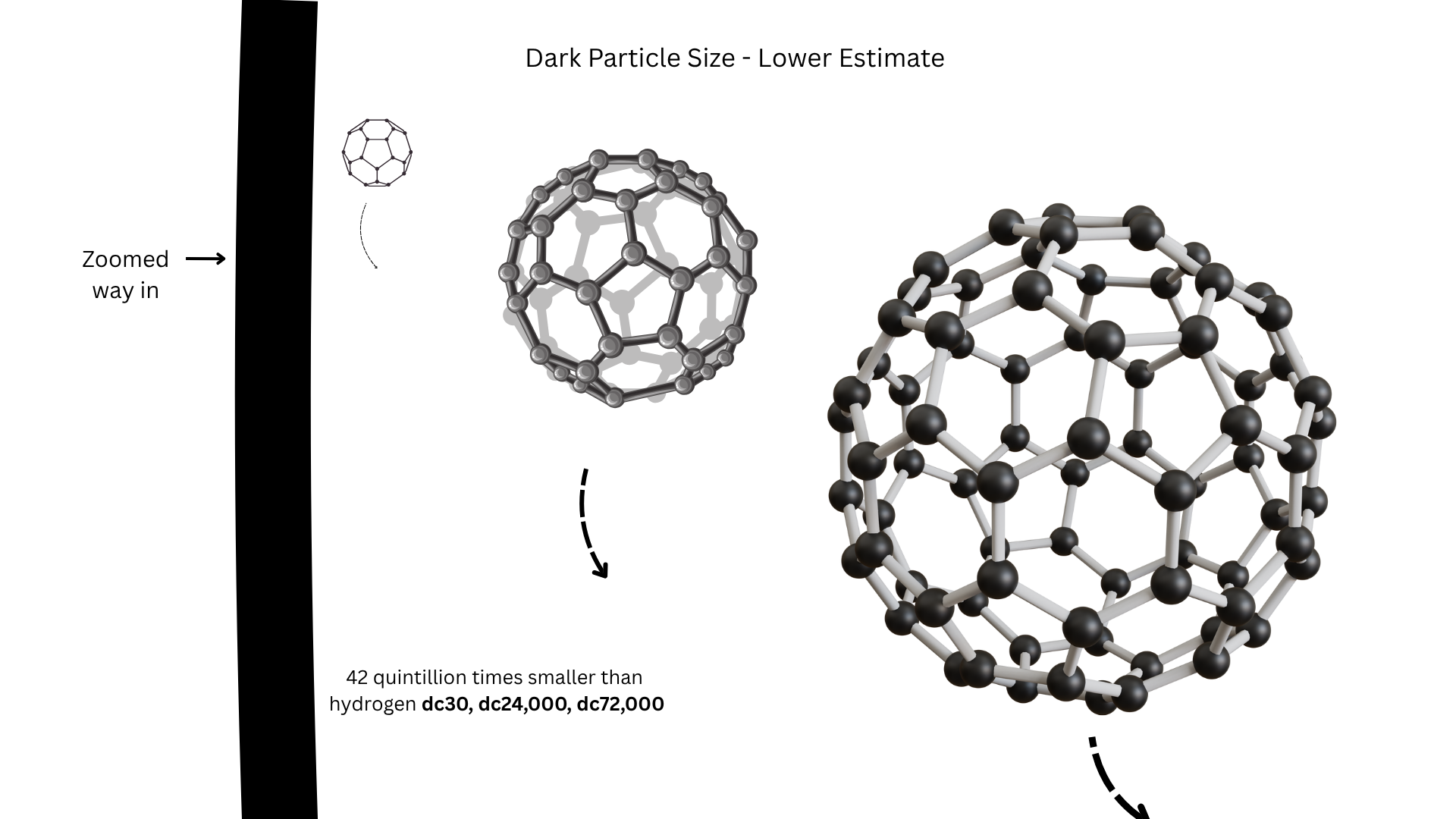One True Physics
After debugging quantum mechanics - one elegant model of physics appears
One True Physics
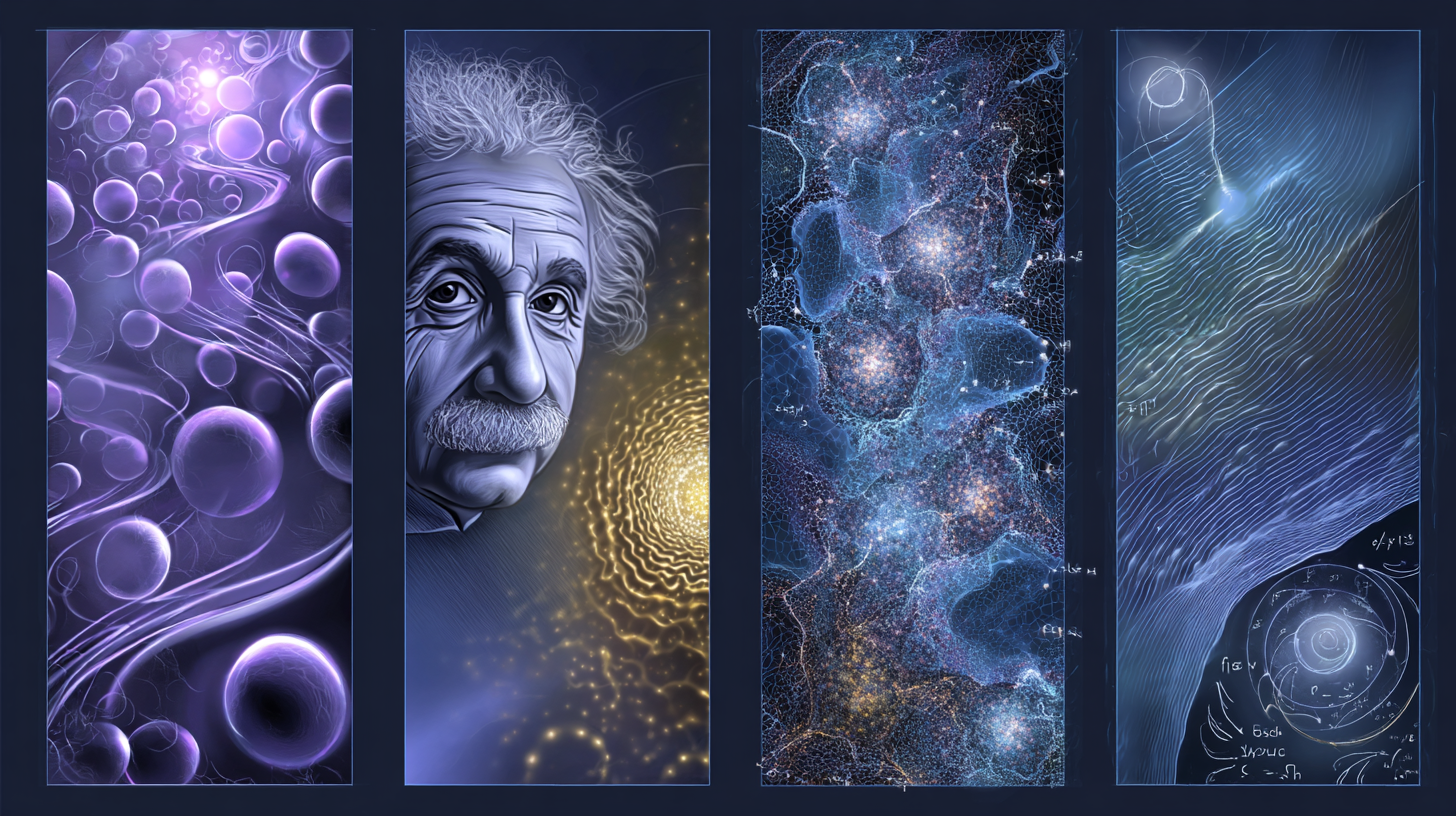
Introduction
The science guide makes these points in more detail:
- Missing Vacuum Cleaner: Who removed 85% of the universe’s mass from inside atoms?
- Unified Simplicity: One mechanism explains everything vs. multiple disconnected “weird” forces
- Occam’s Razor Reversal: “Which is simpler - quantum weirdness or fluid dynamics?”
A perspective on the four forces Einstein might approve of:
- Gravity: Large-scale dark matter particle attraction, waves of energy
- Electromagnetic: dark material oscillations and waves at various frequencies
- Strong forces: fluid pressure gradients between compressed dark matter regions, crust pressure and boundary interactions
- Weak forces: Phase transition in dark material, crust reorganization energy The math for each is based on different material dynamics, hence the plethora of constants, and the need for dark material physics.
Unifying power:
- Quantum mechanics → Classical fluid dynamics
- Four forces → Different manifestations of dark matter dynamics
- Consciousness → Cosmic information processing
- Biology → Engineering principles
Dark Material
Dark matter particles have different sizes and form dark orbital systems.
Under pressure, particles compress and can form rigid crusts around energetic particles.
It’s substrate of particles, materials, that form what we know about today.
Same math, different explanation.
This fluid is cosmic ash from the Big Bang that never got vacuumed out (because there’s no cosmic vacuum cleaner!). It exists at every scale - inside atoms, cells, solar systems - moving with us in co-moving reference frames.
E=mc²: A Unified Fluid Dynamics Framework
The same dark matter fluid dynamics explain both photon propagation and nuclear energy release through a single equation:
For Photon Propagation:
E = kinetic energy of particle + potential energy of fluid motion/compression- Light speed “c” represents the hull speed of dark matter through the medium
- Photons are composite dark matter objects moving at maximum fluid velocity
For Nuclear Reactions:
E = released potential energy as dark material undergoes phase transition- Nuclear fusion/fission involves dark matter crust reorganization around nuclei
- Mass defect represents ejected dark matter (buckyballs) rapidly decompressing
- Same “c²” because released material travels at hull speed through the medium
The Unifying Insight:
Einstein’s equation works universally because all energy phenomena involve dark matter fluid dynamics - whether smooth propagation (photons) or explosive reorganization (nuclear reactions). The speed “c” isn’t a mysterious constant but a material property: the maximum flow velocity of the cosmic substrate itself.
Same Spinning Boundaries
The big bang, or another originating event for an atom would typically cause the dark orbital systems to all spin in the same direction. Gravity will tend to clump and might degrade over time but since it’s a frictionless environment, that’s probably a really long time.
Racetracks form inside electron orbitals where dark orbital systems act like accelerators along the edges of the track.
The same pattern is seen for the Earth/Moon orbital systems’ orbit. It makes for a clean, consistent pressure bubble for all of our observations, giving the false impression of a vacuum.
Boundary Layer Architecture
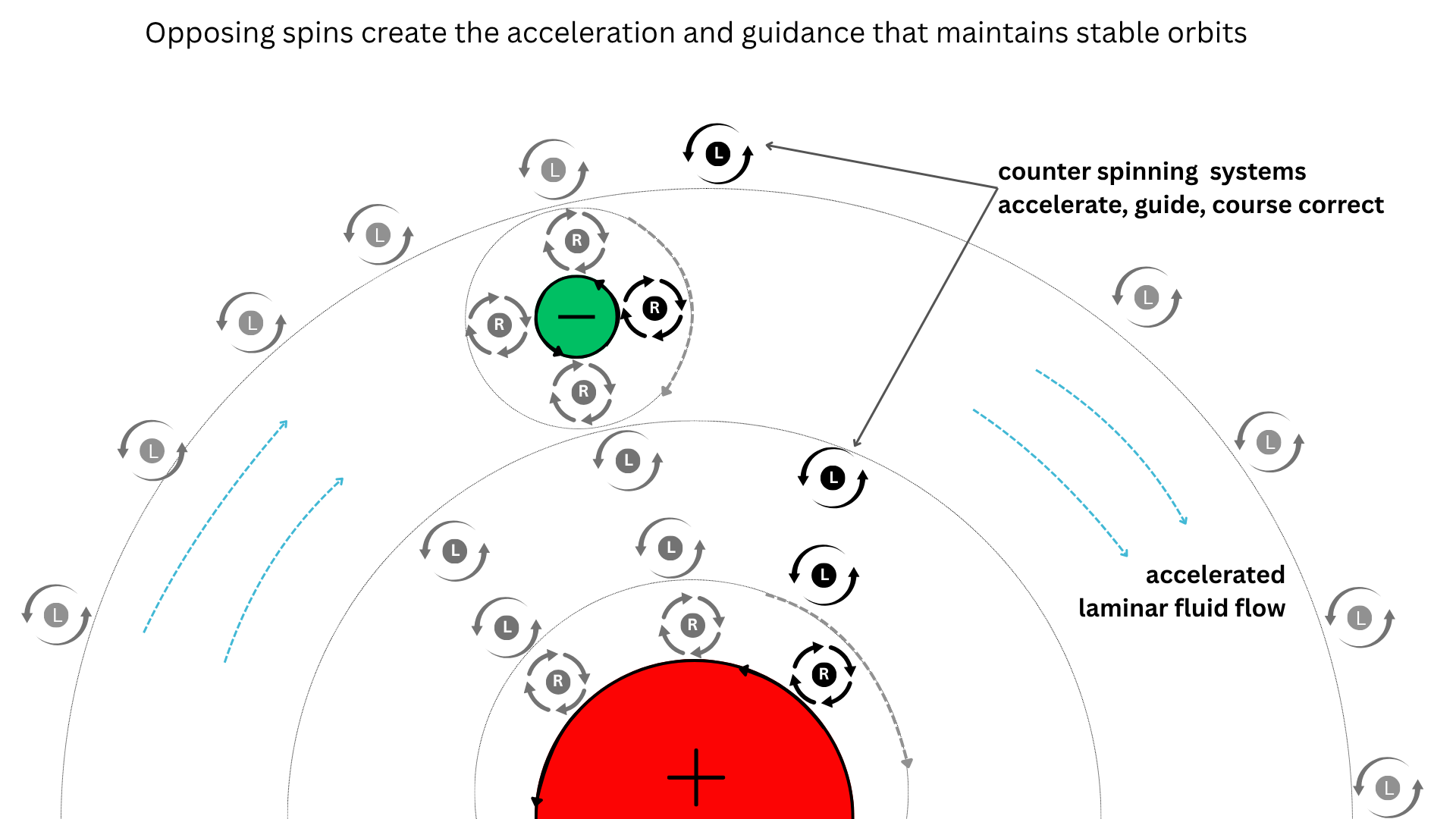

Dark fluid naturally organizes into stratified boundary regions between different phases or structures. These boundaries consist of multiple layers with distinct properties - varying in density, momentum, and material composition - each layer maintained through ballistic collisions and momentum exchange with its neighbors. Critically, larger dark matter structures possess angular momentum and generate their own localized dark matter fields.
Nuclear structure reframed
Protons: Positively charged, unbalanced dark material.
Electrons: Negatively charged, unbalanced dark material.
Photons
Dark material, or dark material clouds with momentum, wave-length is bow/stern wave of particle in dark fluid.
Photons aren’t elementary particles - they’re composite objects made of dark matter “buckyballs” moving through an omnipresent dark fluid medium. They might only be momentum effects in dark matter fluid. The original particles ejected from the sun may have completely disintegrated into the dark fluid wave.
Atomic Nuclei
- Compressed dark material wrapping embedded energy particles (protons and neutrons). Stores compressed potential energy.
Quarks
Stable dark orbital systems in dark fluid.
Antimatter
Opposite angular momentum orientations in unexplained reactions.
Isotopes
Differ by their dark material crust composition, and nuclear magic numbers correspond to particularly stable dark crust configurations.
Leptons
The muon and tau particles represent electrons wearing different dark matter “clothing” - each wrapped in distinct crust types that give them their characteristic masses and decay properties. Similarly, muon neutrinos and tau neutrinos are differentiated by their unique dark matter wrappings rather than being fundamentally different particles. This explains why these particles have identical charges and behaviors but vastly different masses and lifetimes.
Neutrinos
Dark Matter debris, expelled fragments of dark matter crust. Pieces of dark material launched with momentum during nuclear processes. Their extremely low mass and weak interactions reflect their nature as barely-substantial dark matter particles moving at high velocity. Sterile neutrinos likely represent dark material in its natural resting state, explaining why the majority of dark matter appears completely non-interactive with conventional matter.
Nuclear Decay as Crust Instability
Neutron decay occurs when the dark matter crust surrounding a proton becomes mechanically unstable and begins shedding layers. As crust material breaks away, the underlying particle’s properties change - a neutron transforms into a proton as its dark matter envelope reorganizes. This process explains the precise energy relationships in beta decay without requiring mysterious weak force interactions.
Chirality and Material Properties
The handedness (chirality) observed in particle physics emerges from the geometric and rotational properties of dark matter crusts. The shape, spin orientation, and internal structure of these dark material wrappings determine whether particles exhibit left or right-handed behavior, providing a mechanical basis for what appears to be a fundamental quantum property.
Bosons as Ejected Crust Material
Force-carrying bosons represent transient dark matter fragments ejected during particle interactions. When dark crusts collide or reorganize, they shed material that briefly carries momentum and energy between particles before dissolving back into the ambient dark matter substrate.
Axions and Dark Element Signatures
Axions, if confirmed, would provide direct evidence of fundamental dark matter elements existing in space. Their properties could reveal the characteristic scales and masses of the basic dark material “periodic table,” offering crucial insights into the elemental building blocks that form all the complex dark matter structures we observe from atomic to galactic scales.
Pressure response and mechanical properties
Under increasing pressure, dark material exhibits remarkable versatility: transitioning from light, airy states to dense, ballistic configurations, then finally to rigid, mechanically stable structures. This creates a springboard effect where compressed dark material can store and release significant momentum, influencing particle trajectories and creating stable atomic architectures through purely mechanical forces rather than electromagnetic attraction.
Magnetism: Dark Orbital Dynamics
Magnetism provides the clearest demonstration of dark orbital system interactions. When two magnetic materials approach with their dark orbital systems rotating in opposite directions, the complementary flow patterns create mutual attraction. Rotate one magnet 90 degrees so both systems spin in the same direction, and their orbital streams collide, producing ballistic repulsion. The attraction varies smoothly as you rotate between these orientations, creating the familiar magnetic field patterns.
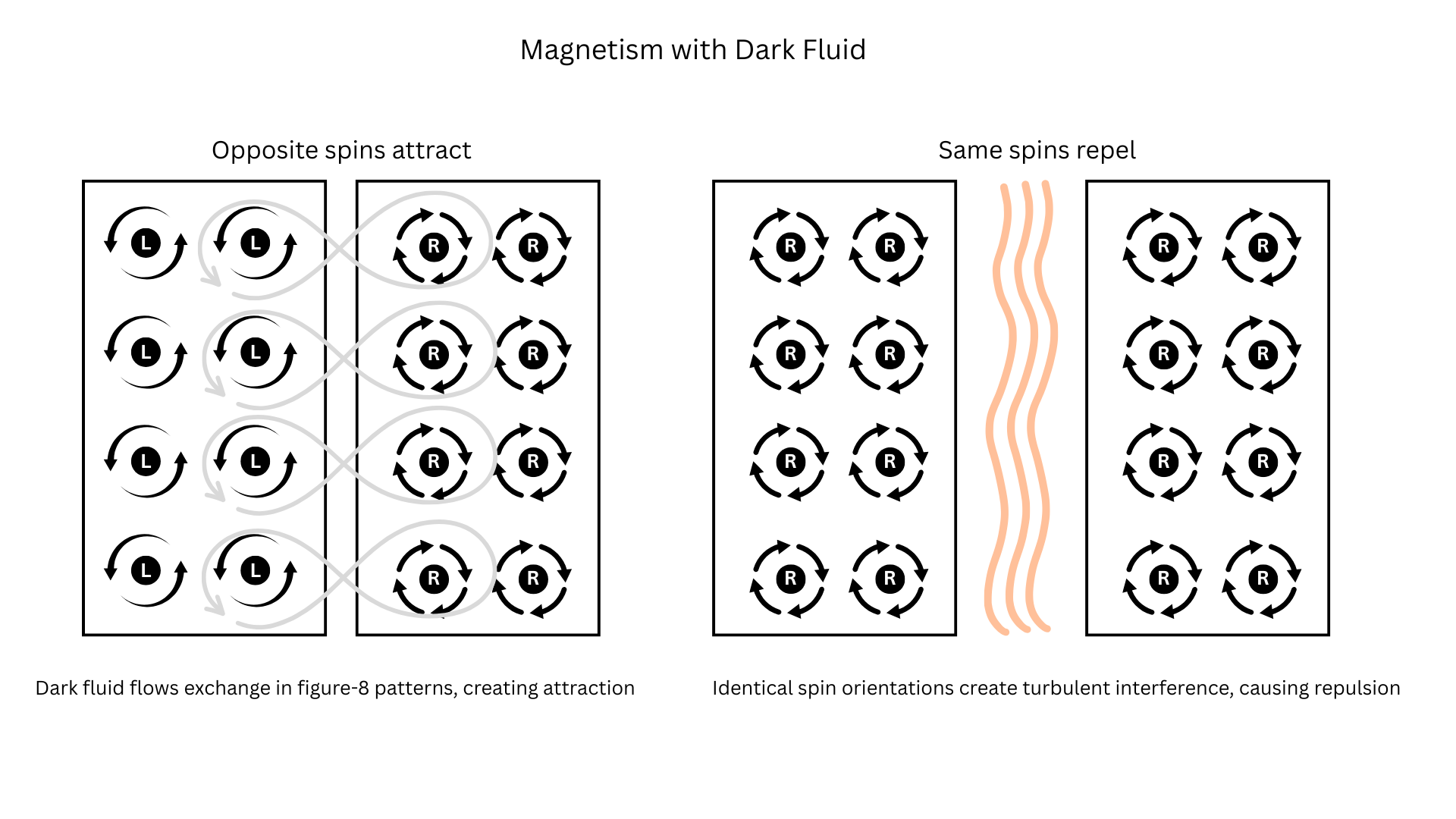
The mechanical nature of this system explains magnetic behavior that seems mysterious in conventional physics. Strike a magnet with a hammer and its magnetic strength diminishes - the impact disrupts the organized dark orbital systems, scattering their alignment. To re-magnetize it, expose the weakened magnet to a stronger one. The organized orbital currents from the powerful magnet realign the disrupted systems in the weaker magnet, restoring its magnetic properties.
This demonstrates a fundamental principle: when dark orbital systems become disorganized, their collective effects diminish. The more precisely aligned the systems, the stronger their attractive or repulsive forces become.
Dark Material Properties
One model for understanding how dark matter behaves is carbon. During high energy combustive states, it can form buckeyball shapes like C₃₀.
If dark matter particles formed similar shapes, they would be much, much smaller but would behave the same way:
- Form in high-energy environments
- Incredibly resilient - can withstand enormous pressures before deforming
- Nearly frictionless when rolling (hence “buckyballs”)
- Can trap other atoms inside the cage
- Compressibility and rolling explains unique wave propagation properties
It also explains why they persist in the spinning state for billions of years.
The Orbital Plane Discovery
We believe gravity warps space/time but we are seeing dark fluid dynamics effects, explained by the same equations. All light that we see from our viewpoint on earth arrives via the orbital plane. All light we view from remote objects emerges from the orbital plane’s heliosphere bubble. So light is being sent and received from within these pristine bubbles carved out by spinning dark orbital systems.
- Light transmission = requires fluid medium
- Dark fluid = constrained to orbital planes
- Poles = turbulent, wonky fluid dynamics
Equatorial plane = clean, laminar flow for light transmission
This explains:
- Why we can see clearly along the galactic plane
- Why polar observations are more difficult, quasar light energy
- Why our “cosmic web” appears as filaments - it’s following orbital flow patterns!
- Why electromagnetic phenomena concentrate along orbital planes
The Network Effect: We’re not just randomly scattered in space - we’re positioned in the information superhighway of the universe! The orbital plane is where cosmic data flows cleanly. It appears to act with with a consistent light speed because of our relative position in the cosmic network, and challenge of observing outside our pristine bubble to the universe.
Less Weird: Restoring Classical Physics
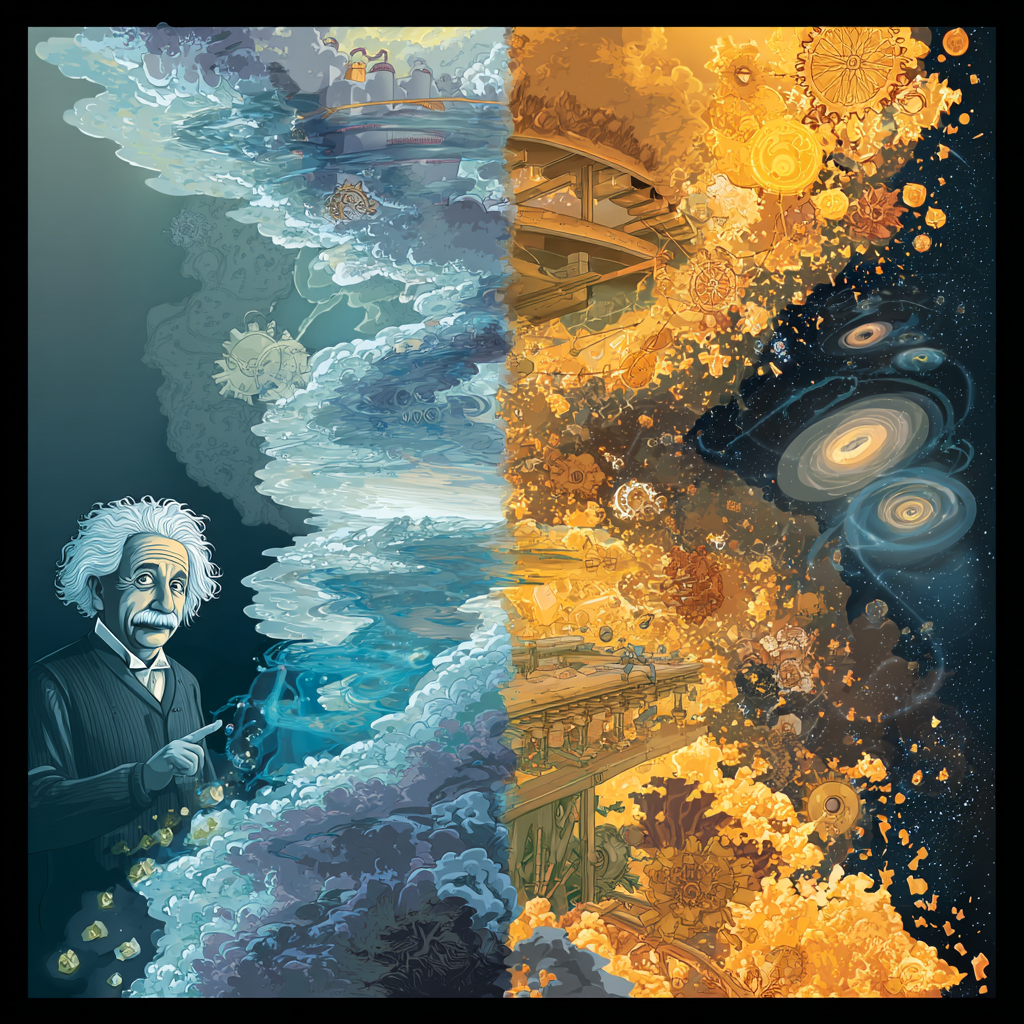
Quantum tunneling: surfing dark matter waves
Quantum tunneling loses its mystical character when viewed as particles surfing pressure waves in the dark matter substrate. Rather than “magically” teleporting through energy barriers, particles ride dark matter bow waves that carry them over obstacles they couldn’t surmount alone. Like a surfer catching a wave to reach heights impossible by swimming, particles use the momentum and energy stored in dark matter pressure waves to traverse barriers that would otherwise block their path. The tunneling probability reflects the strength and timing of these dark matter waves, not supernatural quantum behavior.
Superposition: definite particles in wavy environments
Particles always maintain definite positions and states - the apparent “superposition” arises from their wavy dark matter environment, not from the particles themselves existing in multiple states simultaneously. When we observe interference patterns, we’re seeing the effects of particles following paths influenced by dark matter wave interference, similar to how a boat’s course changes when sailing through crossing wave patterns. Measurement doesn’t “collapse” a mysterious quantum state; it simply captures the particle at whatever definite location it occupied when the dark matter waves were disrupted by the detection apparatus.
Quantum entanglement: a non-phenomenon
Quantum entanglement dissolves under the dark matter model. What appears to be instantaneous correlation between distant particles is actually the result of:
- Shared dark matter wave patterns established during initial particle interactions
- Environmental dark matter “weather” conditions that affect both particles similarly
- Statistical artifacts from assuming smooth conditions when experimental apparatus creates standing wave patterns
The seemingly magical “spooky action at a distance” becomes ordinary cause-and-effect operating through the dark matter medium that connects all space.
The return to intuitive physics
By recognizing dark matter as a dynamic, mechanical medium rather than empty space, we restore physics to Einstein’s vision: a universe operating through comprehensible, local interactions. Particles behave like classical objects moving through an invisible fluid, following deterministic laws modified by the complex but ultimately mechanical properties of their dark matter environment. The “weirdness” was never in the quantum realm - it was in our incomplete understanding of the medium through which all particles move.
Read more:
- → ✨ More Light - In depth articles on the science before this discovery
Or jump right to:
- → 🧞 DNA Discovery See how dark fluid works in DNA
- → 🌱🔧 Bioneers Building tomorrow with nature’s blueprints
🧅✨
Ready to Join the Dialog?
⛰️🕊️🗽 @jeffvroom on Truth Social
🌍🎻✨
